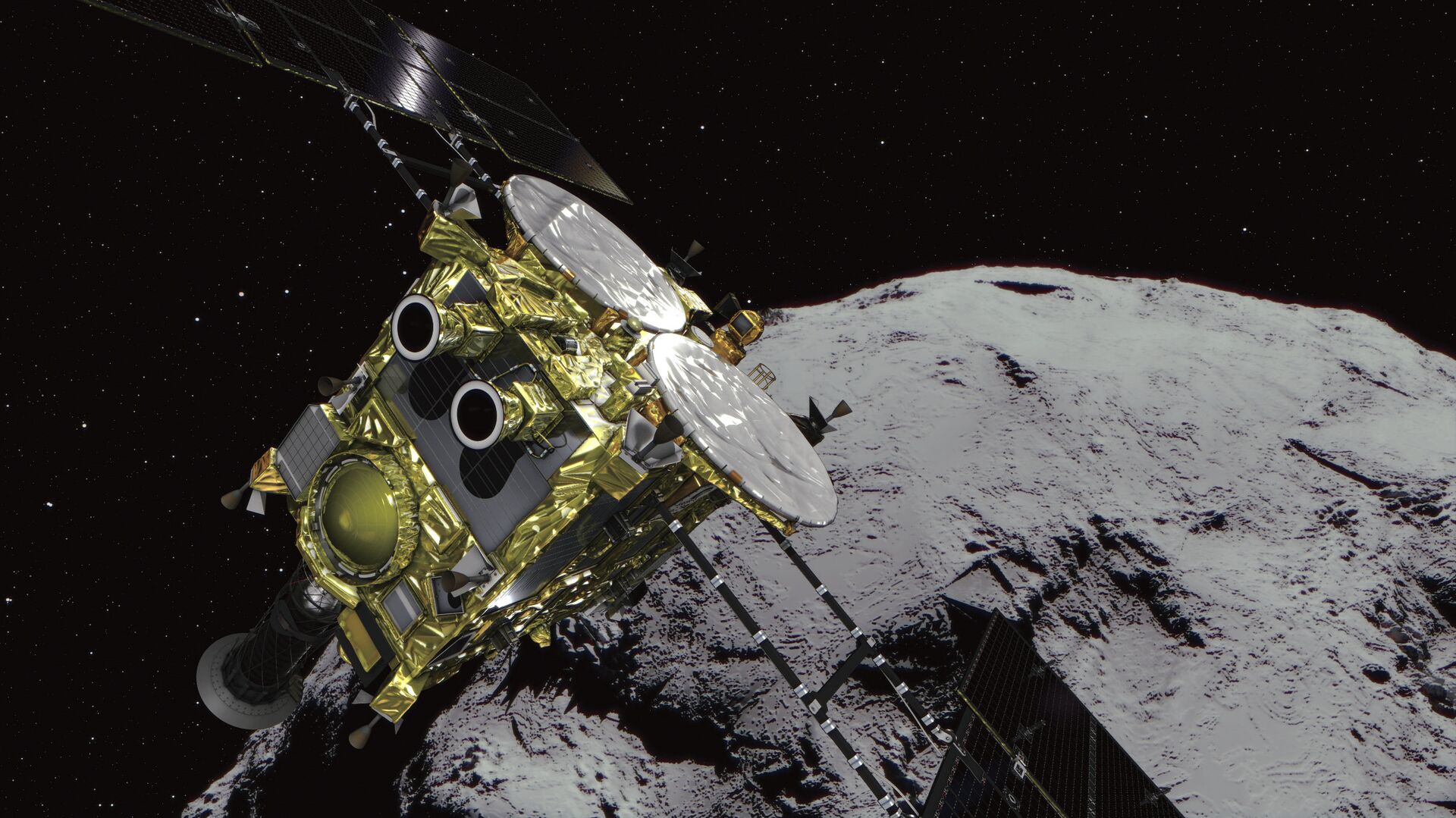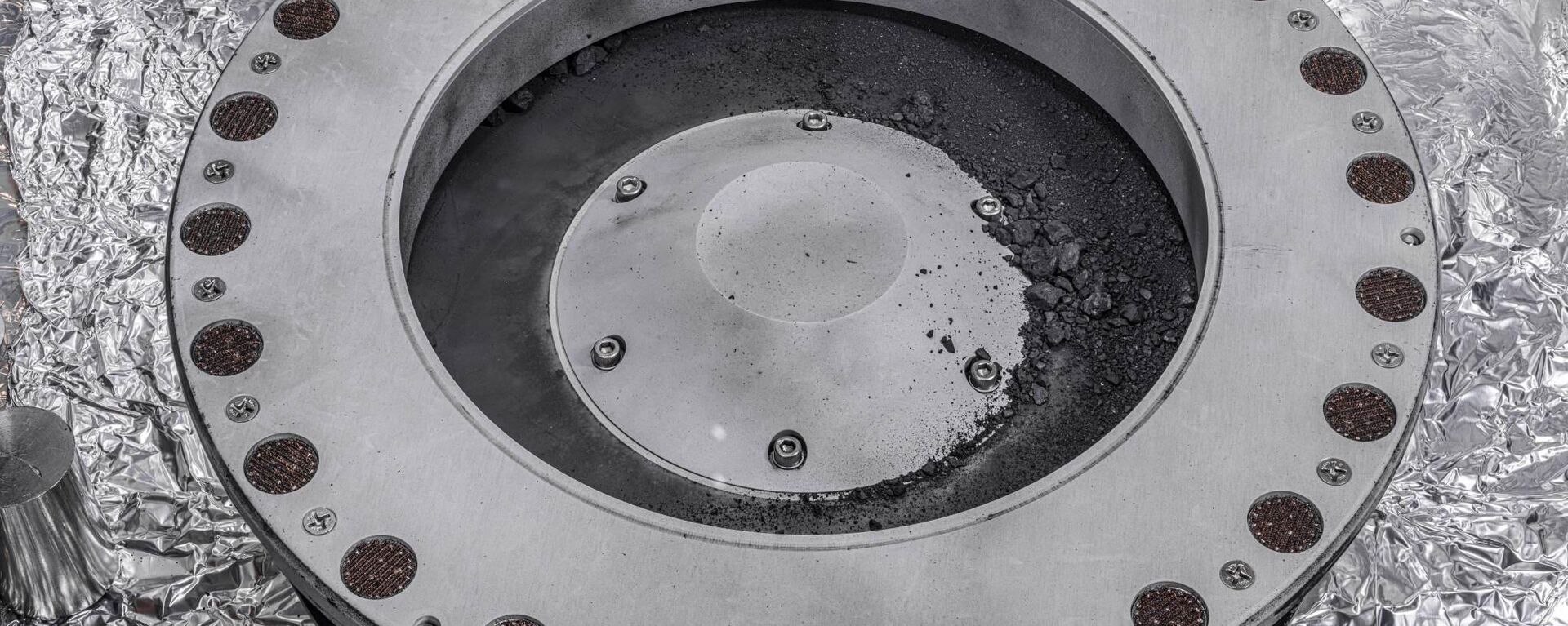https://en.sputniknews.africa/20231112/1063501250.html
How Do Planets Form? Telescope Data Reinforces 'Ice Pebble Drift' Theory
How Do Planets Form? Telescope Data Reinforces 'Ice Pebble Drift' Theory
Sputnik Africa
The James Webb Space Telescope (JWST) is a high-resolution, infrared space telescope. Launched in 2021, the telescope is able to detect objects from the early... 12.11.2023, Sputnik Africa
2023-11-12T14:48+0100
2023-11-12T14:48+0100
2023-11-12T17:16+0100
nasa
space
earth
space exploration
science
investigation
research
astronomy
international
https://cdn1.img.sputniknews.africa/img/07e7/0b/0c/1063501420_0:0:2501:1406_1920x0_80_0_0_0f40963670c15ebf7bb7a14ae11963b4.jpg
The JWST Telescope has captured key evidence reinforcing a well-established theory about how planets are formed, strengthening astronomers' belief in their understanding of this aspect of the universe. The latest observations from the JWST lend credence to the "ice pebble drift" hypothesis which postulates that new planetary bodies emerge from clouds of ice-encrusted cosmic dust and rocks.These icy objects slow down on collision, moving closer to the star into an area where the ice melts. The theory suggests that planet formation begins with these accumulations. As these icy pebbles migrate across protoplanetary disks, they warm up and melt, releasing solid materials and water vapor. This process contributes to the gradual evolution of these materials into rocky planets.The recent research, the results of which first appeared on NASA's website, aimed to understand whether water vapor could be found in distant starlight, a vital part of the model. However, earlier studies could not confirm this. Scientists used the powerful JWST telescope to take high-quality images for a better look. Building on these general observations, the JWST's advanced capabilities allowed scientists to delve into more specific aspects of planetary formation. They examined two types of young planetary systems: extended and compact. Extended disks are larger and characterized by distinct rings formed by pressure and gravity, whereas compact disks are more densely arranged.Recent studies have revealed that icy materials can migrate across protoplanetary disks, particularly in compact disks where this process is more efficient. By examining data from compact and extended disks, scientists observed a higher accumulation of water vapor at the 'snowline' of compact disks, indicating significant vapor loss from icy pebbles. This supports the hypothesis that building materials for new planets can move inward across the disk. This inward movement is facilitated in compact disks as there are no large gaps to cross.This intriguing discovery was facilitated by JWST's advanced instruments. Astronomers are now equipped to explore further the formation of planets with the confirmation that this specific phenomenon is occurring.
https://en.sputniknews.africa/20231012/bennu-asteroid-sample-contains-basic-life-components-nasa--1062729897.html
space
earth
Sputnik Africa
feedback@sputniknews.com
+74956456601
MIA „Rossiya Segodnya“
2023
Chimauchem Nwosu
https://cdn1.img.sputniknews.africa/img/07e8/06/0b/1066992175_0:0:278:278_100x100_80_0_0_b5f6eaa3b85dbfcd0266ea860848a996.jpg
Chimauchem Nwosu
https://cdn1.img.sputniknews.africa/img/07e8/06/0b/1066992175_0:0:278:278_100x100_80_0_0_b5f6eaa3b85dbfcd0266ea860848a996.jpg
News
en_EN
Sputnik Africa
feedback@sputniknews.com
+74956456601
MIA „Rossiya Segodnya“
Sputnik Africa
feedback@sputniknews.com
+74956456601
MIA „Rossiya Segodnya“
Chimauchem Nwosu
https://cdn1.img.sputniknews.africa/img/07e8/06/0b/1066992175_0:0:278:278_100x100_80_0_0_b5f6eaa3b85dbfcd0266ea860848a996.jpg
nasa, space, earth, space exploration, science, investigation, research, astronomy, international
nasa, space, earth, space exploration, science, investigation, research, astronomy, international
How Do Planets Form? Telescope Data Reinforces 'Ice Pebble Drift' Theory
14:48 12.11.2023 (Updated: 17:16 12.11.2023) The James Webb Space Telescope (JWST) is a high-resolution, infrared space telescope. Launched in 2021, the telescope is able to detect objects from the early history of the universe, up to 180 million years of cosmic time after the Big Bang.
The JWST Telescope has captured key evidence reinforcing a well-established theory about how planets are formed, strengthening astronomers' belief in their understanding of this aspect of the universe. The latest observations from the JWST lend credence to the "ice pebble drift" hypothesis which postulates that new planetary bodies emerge from clouds of ice-encrusted cosmic dust and rocks.
These icy objects slow down on collision, moving closer to the star into an area where the ice melts. The theory suggests that planet formation begins with these accumulations. As these icy pebbles migrate across protoplanetary disks, they warm up and melt, releasing solid materials and water vapor. This process contributes to the gradual evolution of these materials into rocky planets.
The recent research, the results of which first appeared on
NASA's website, aimed to understand whether water vapor could be found in distant starlight, a vital part of the model. However, earlier studies could not confirm this. Scientists used the powerful JWST telescope to take high-quality images for a better look.
Building on these general observations, the JWST's advanced capabilities allowed
scientists to delve into more specific aspects of planetary formation. They examined two types of young planetary systems: extended and compact. Extended disks are larger and characterized by distinct rings formed by pressure and gravity, whereas compact disks are more densely arranged.
Recent studies have revealed that icy materials can migrate across protoplanetary disks, particularly in compact disks where this process is more efficient. By examining data from compact and extended disks, scientists observed a higher accumulation of water vapor at the 'snowline' of compact disks, indicating significant vapor loss from icy pebbles. This supports the hypothesis that building materials for new planets can move inward across the disk. This inward movement is facilitated in compact disks as there are no large gaps to cross.
"In the past, we had this very static picture of planet formation, almost like there were these isolated zones that planets formed out of," acknowledged planetary scientist Colette Salyk from Vassar College.
This intriguing discovery was facilitated by JWST's advanced instruments. Astronomers are now equipped to explore further the formation of planets with the confirmation that this specific phenomenon is occurring.



